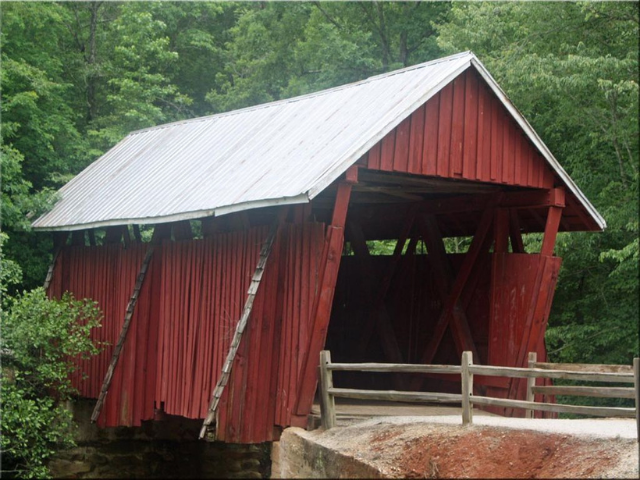
Campbell's Covered Bridge in Gowensville, SC (2016, November 23). Wikimedia Commons. Retrieved 15:04, July 24, 2017.
Greenville County's origins are uncertain, but the county was probably named for Revolutionary War general Nathanael Greene (1742-1786) or for an early resident, Isaac Green. This part of the state was the territory of the Cherokee Indians until 1777. Scotch-Irish and English settlers began moving into the area soon after it was ceded to the state. Greenville District was created in 1786, but from 1791 to 1800, it was part of the larger Washington District. The county seat was originally named Pleasantburg, but in 1831 the name was changed to Greenville. Because of its location in the foothills of the Blue Ridge Mountains, Greenville County became a popular summer retreat for Lowcountry planters. Encouraged by abundant streams and rivers, textile manufacturers began operating in the area as early as the 1820s, and after the Civil War, Greenville County became a textile center. Diplomat and Congressman Waddy Thompson (1798-1868) was a resident of Greenville, and in more recent years, the county has produced baseball player "Shoeless Joe" Jackson (1887-1951), Nobel Prize winner Charles Townes and civil rights leader Jesse Jackson.


